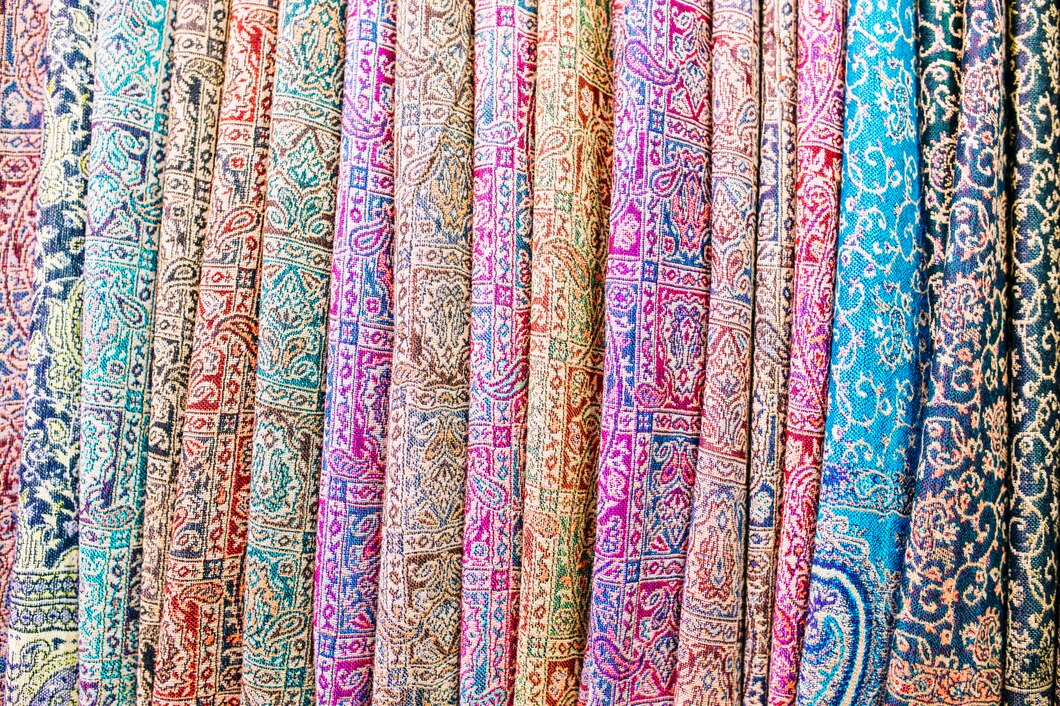The elegance of one fabric draped gracefully around the body woven with intricate patterns and colours depicts the rich story of every woman in India. For centuries, sarees have been more than just a fashion statement, they have been a symbol of identity, deep rooted in culture and tradition. It is believed that the first saree originated in the Indus Valley civilisation, with materials like silk and cotton as an unstitched cloth, draped for daily wear, rituals and festivals. The traditional sarees used natural dyes like indigo, red madder and turmeric with embroidery influenced by the changing times, designs and embroideries from Mughal and Parsi cultures, to stylistic changes during the British Raj and finally, the diversity of the modern day saree. The traditional saree symbolised grace, femininity and modesty, although the modern saree represents these it moves more toward symbol of identity and self expression.
The beginning of the saree started at the Indus Valley Civilisation during 3300-1300 BCE, where it was worn like an unstitched garment draped around the body. As the earliest cultivation of material, most sarees were primarily made of hand-spun, woven cotton making them practical and breathable. The long flowing fabric consisted of minimal ornamentation with patterns and dyes being used to some extent, while being secured around the waist for ease of movement. There is little evidence of stitched blouses or cholis during these times, hence it is assumed that women left their body bare with nothing but the saree. During the Indus Valley Civilisation, the saree was more than just a garment, it was a symbol of identity and cultural expression stemming from the resources and ideologies during that time.
The Mughal period played a crucial role in the evolution of the saree, with new styles, materials and embroidery. As advancement began, sarees moved away from cotton to new materials like silk, muslin, brocade and fine cotton to show diversified styles among the people. The Mughal period brought a new style known as “zari” or “zardozi” work with intricate embellishments and embroidery from gold and silver threads. The patterns often depicted floral or persian inspired ornaments, iterating the saree as more than just a blank canvas but a medium for artistic expression. Royal influence played a heavy role with detailed craftsmanship and embroidery beginning styles like long embroidered coats (angarkhas) or sheer odhnis (veils) for modesty and elegance. Although the earlier form of wearing no blouse was prevalent during this time, the Mughal period saw an emergence of stitched cholis and petticoats to cover the chest. The Mughal era paved the way for the saree to be seen as an icon of sophistication and luxury through artistic expression.
From 1858 began the British Raj where the textile industry expanded due to machine made clothing, however, despite the British Industrial revolution saw a rise in hand made sarees. Sarees made from Khadi became a symbol of the Swadeshi movement and resistance from the British, where Victorian inspired dressing played a pivotal role in the saree styles. Victorian modesty influenced an increasing trend in tailored blouses, petticoats, and longer sleeves with transitional draping styles with modern adaptations. The saree became a symbol of national identity with independence fighters like Rani Lakshmi Bai, who wore the traditional attire as a mark of resistance against British rule. Hence, during the period, the saree played a key role in India’s independence movement becoming a representation of freedom, resistance and nationalism.
Today sarees are available in a range of materials, colours, patterns and styles. While traditional draping styles remain popular, many new and experimental ways have emerged like pre-stitched, saree gowns and experimental drapes have shown the diverse and versatile nature of sarees. Materials like silk, chiffon, cotton, georgette and synthetic sarees are available with a wide colour range and intricate embroidery. Aspects like social media and bollywood influence the younger generation to experiment with sarees like replacing the blouses with crop tops, adding belts or jackets, making unique outfits like never before. The rising knowledge on sustainability is creating a growing movement towards reviving hand-loom sarees for an eco-friendly and fashionable choice. The saree remains a powerful expression of feminism and identity where women proudly wear it in business, politics and activism, as a true testament of strength and power.
The journey of the saree from the Indus Valley Civilisation to Modern India depicts the timeless and evolving elegance of the garment. Once a symbol of grace and modesty has turned to a medium of identity and self-expression, blending tradition with modernity signifying strength, resilience and heritage.

